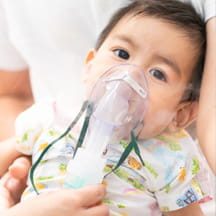Children’s hospitals work every day to ensure every child develops and thrives to become a healthy adult. This includes providing direct or consultative care during medical emergencies involving infants, children or adolescents – wherever they occur. The Wall Street Journal’s investigation into pediatric emergency care in general hospitals across the U.S. needed to dig deeper to explore the work and coordination underway to ensure children have access to the right care at the right time across the U.S. health care system. There are many examples of when things work well. Every clinician and caregiver in a hospital wants to provide the best care for every patient, and we need to ensure they have the resources to do this – from triage to stabilization through treatment and/or transfer.
As the article outlines, there are disparities among general hospitals in the resources available to care for the infrequent pediatric emergency. These differences are a result of variations in the regulatory requirements, clinical information and connectivity, and financial means to ensure they are ‘ready’. Being ready means stocking an array of appropriately sized medical supplies and medicine dosages, providing additional skills training, and ensuring a clinician is assigned to monitor, sustain, and improve the capabilities that are uniquely required to care for diverse pediatric patients in size (may weigh less than 10 pounds to more than 100 pounds), diagnosis and developmental stage.
For general hospitals, pediatric readiness requires additional time, energy, space and, importantly, money. To continue to improve pediatric care in every community, we need to continue to work together. We call on policymakers to make state and federal investments in the pediatric health system, including defining common standards of pediatric readiness, funding for pediatric-specific readiness in all hospitals, reducing barriers to care (including reimbursing across state lines), and providing support to establish the needed connections to pediatric expertise.
While children’s hospitals specialize in pediatric care and are prepared to treat children who face the most severe and complex conditions in addition to providing routine primary, specialty and emergency care, we recognize our health care colleagues outside of the children’s hospital systems cannot and should not be required to provide the same level of care. Yet it is essential they access our expertise to support the care for the children in their communities.
Many children’s hospitals partner with general hospitals today, and these efforts need to be expanded and built upon. Initiatives between tertiary children’s hospitals or major systems and outlying general and rural hospitals enable children’s hospitals to provide technical support including training, telemedicine, and other consultative support, which reduces the need for transfer or when needed expedites transfer to specialized children’s hospitals.
There are many people, organizations and federal agencies working to make progress, and in fact, have saved lives through their work. Our nation’s children’s hospitals and other hospitals rely on the important collaborations among the participating and partners of the Emergency Medical Services for Children (EMSC) Improvement and Innovation Center – which leverages the expertise of multiple professional societies and federal organizations to improve health care outcomes for children in emergency settings.
With these and other tools available, we must work together to advocate for meaningful changes in the health care system that value children as much as adults. Rather than focus only on what is going wrong, we should ask, how do we accelerate, spread and scale what is going right so every child has access to the right care in any emergency?




